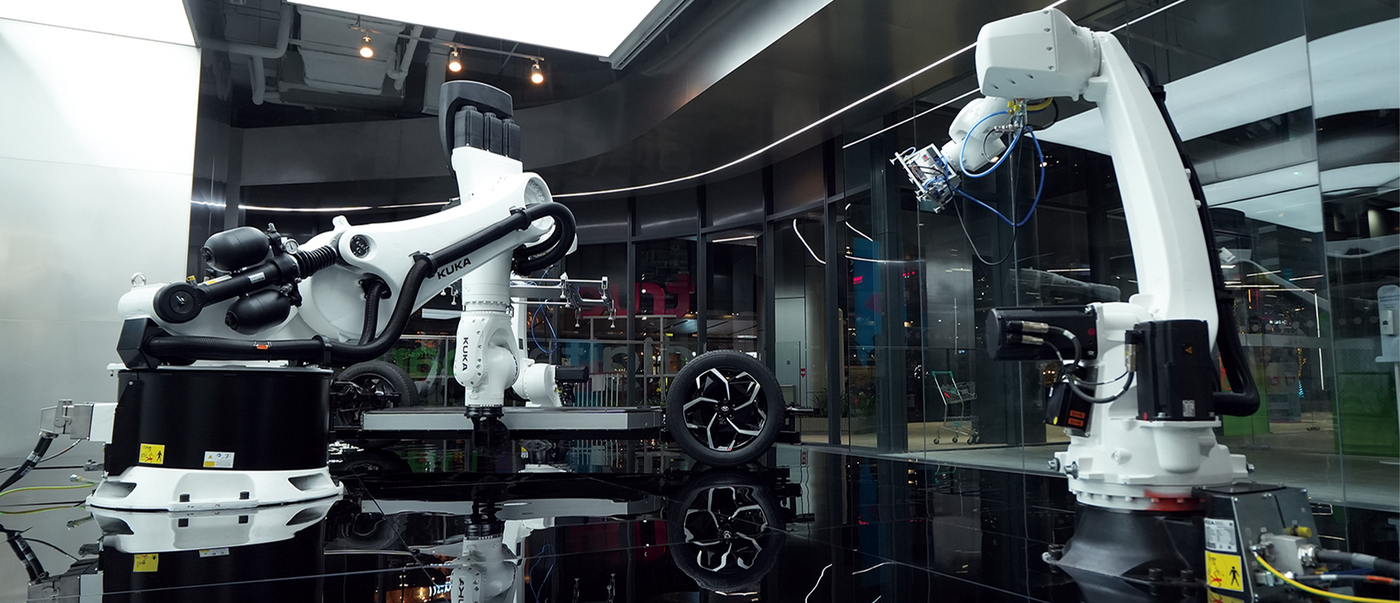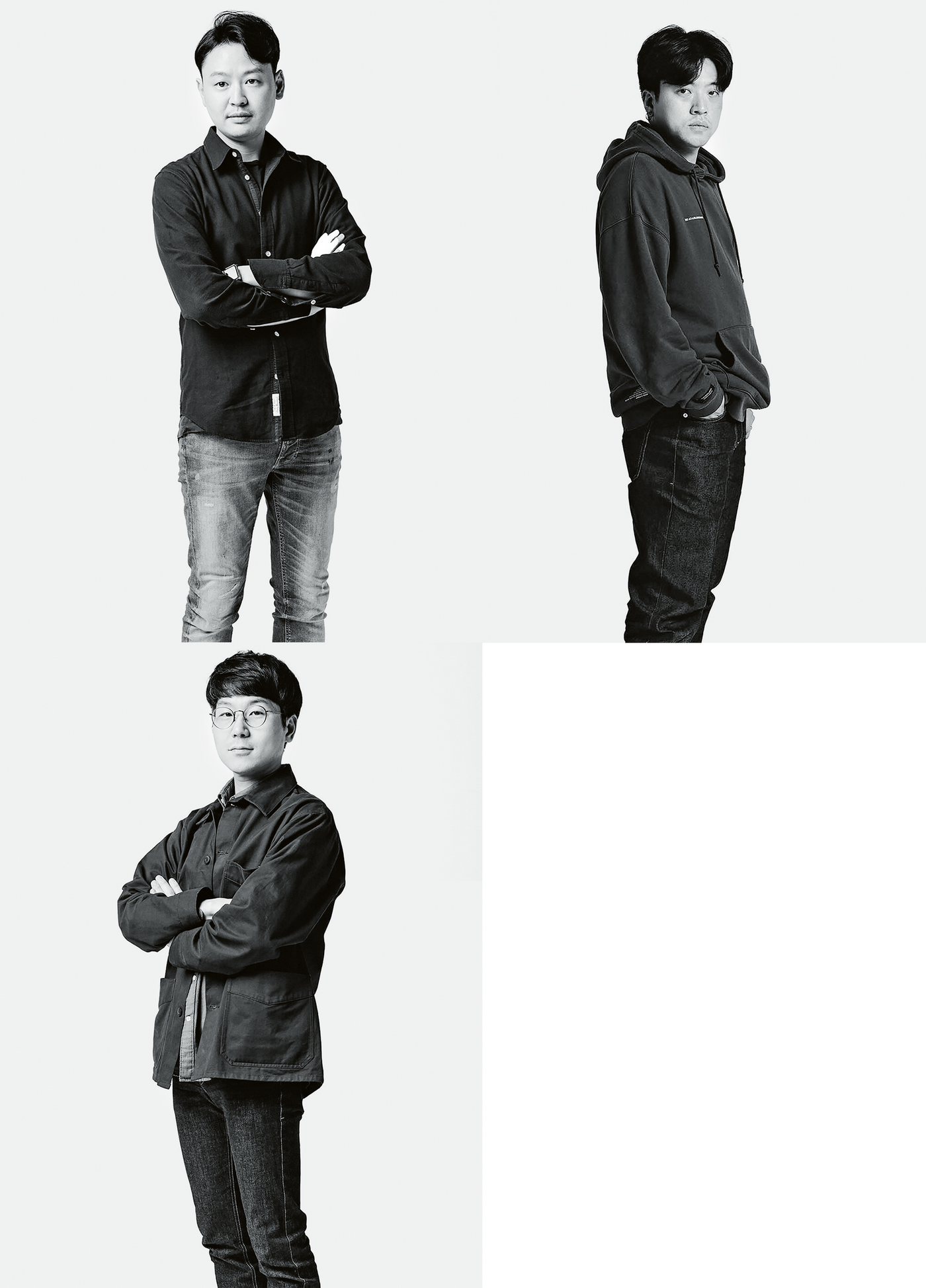
MADGENERATOR uses industrial robots to create new visual and spatial experiences and to produce innovative content. Collaborative projects with various companies involve a combination of robotics, digital media art and creative content. They leverage technology to deliver its positive effects and brand value to the public sphere.
Interview with Madgenerator
Red Dot: You designed the robotic performance “Unveiling E-GMP” to showcase Hyundai’s celebrated electric car platform. How did you approach this project?
Madgenerator: The project was designed to showcase Hyundai Motor Group’s platform in a public commercial space. The platform offers scalability and excellent performance, but there are limitations to conveying these advantages to the public through technical explanations. That’s why we aimed to demonstrate that perfected technology can also impart beauty.
In the performance, the robots move very slowly and uniformly – the effect is more tai chi than car factory. What emotions did you want to evoke?
I like the comparison with tai chi. There are two reasons why we chose this movement style. Firstly, the robots were intended to showcase the car, not to manufacture it. We aimed to make the movements of the robots, which were carrying a 1:1 mock-up of an actual car, as smooth and elegant as possible. This allowed the audience to visualise the details and perceive the movements as poetic rather than intimidating or frightening. Secondly, industrial robots are very heavy, and retail spaces differ significantly from factory spaces in many ways that make safety and stability crucial, which is why the robots had to move as slowly and smoothly as possible.
You specialise in creative content featuring robotics. What range of expression do robots have?
This is a very broad topic, so I’ll just talk about the robotic arms that I mainly used in this project. They’re precise, fast and excellent at repetitive movements. Thanks to their expandable systems and stable operation, industrial robots also have an additional quality which allows their movements and performance to become installation art. That’s what I find truly fascinating. Obviously, installation limitations make robotic performances for branding purposes or in commercial spaces quite challenging. But I certainly believe that industrial robots can overcome these limitations and serve as a medium for this purpose.

